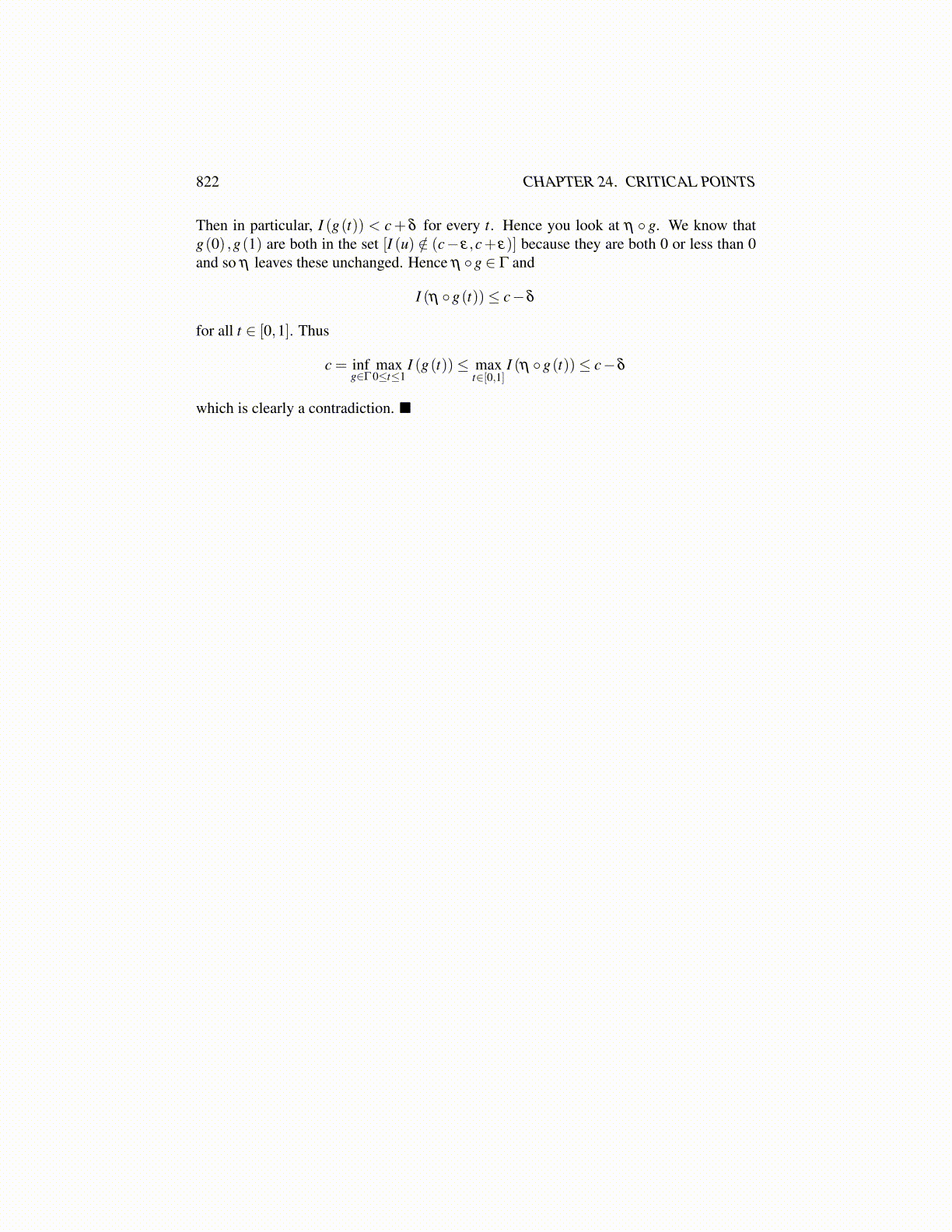
822 CHAPTER 24. CRITICAL POINTS
Proof: First note that c ≥ a > 0. Suppose c is not a critical value. Then eitherI−1 ((c−δ ,c+δ )) = /0 for some δ > 0 in which case the conclusion of the deformationtheorem, (Theorem 24.1.13) holds, or for all δ > 0, I−1 ((c−δ ,c+δ )) ̸= /0 and if I (u) = c,then I′ (u) ̸= 0 in which case the deformation theorem also holds. Then by this theorem,for ε > 0,ε sufficiently small, ε < c, there is η : X → X and a δ < ε small enough that
η(I−1 ((−∞,c+δ ])
)⊆ I−1 ((−∞,c−δ ])
and η leaves unchanged I−1 (X \ (c− ε,c+ ε)). Then there is g ∈ Γ such that
maxt∈[0,1]
I (g(t))< c+δ
Then in particular, I (g(t)) < c+ δ for every t. Hence you look at η ◦ g. We know thatg(0) ,g(1) are both in the set [I (u) /∈ (c− ε,c+ ε)] because they are both 0 or less than 0and so η leaves these unchanged. Hence η ◦g ∈ Γ and
I (η ◦g(t))≤ c−δ
for all t ∈ [0,1]. Thus
c = infg∈Γ
max0≤t≤1
I (g(t))≤ maxt∈[0,1]
I (η ◦g(t))≤ c−δ
which is clearly a contradiction.